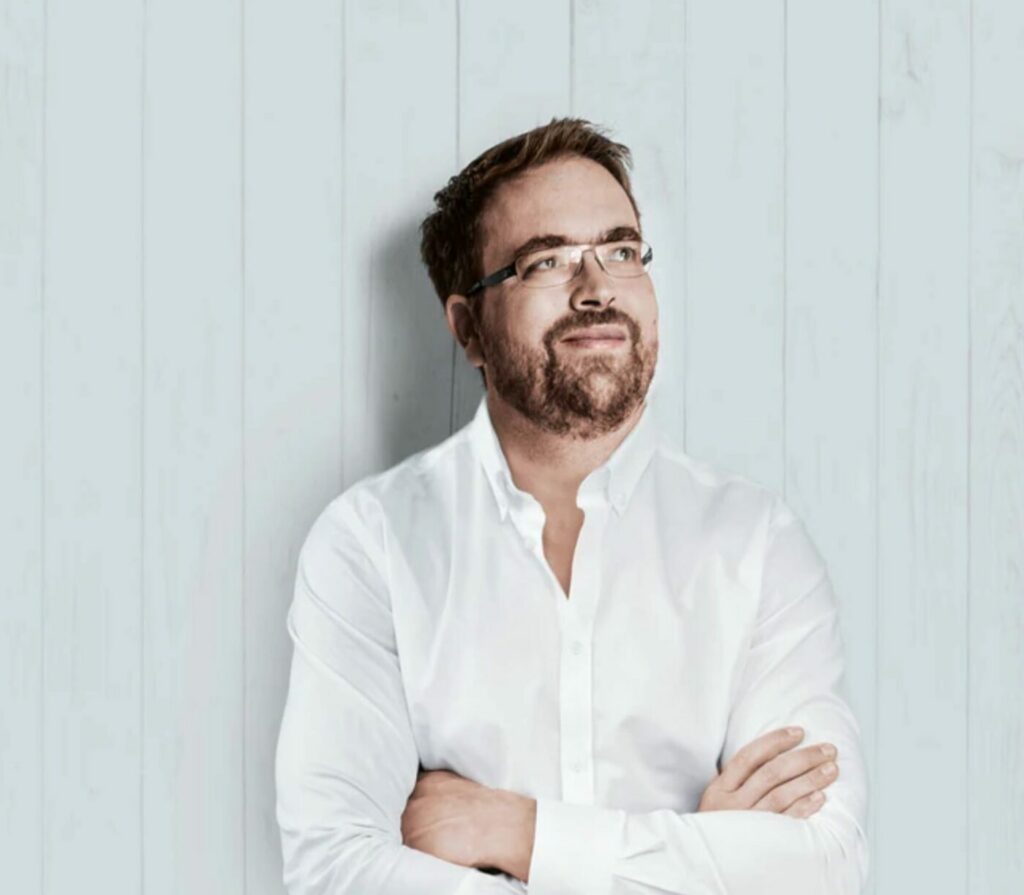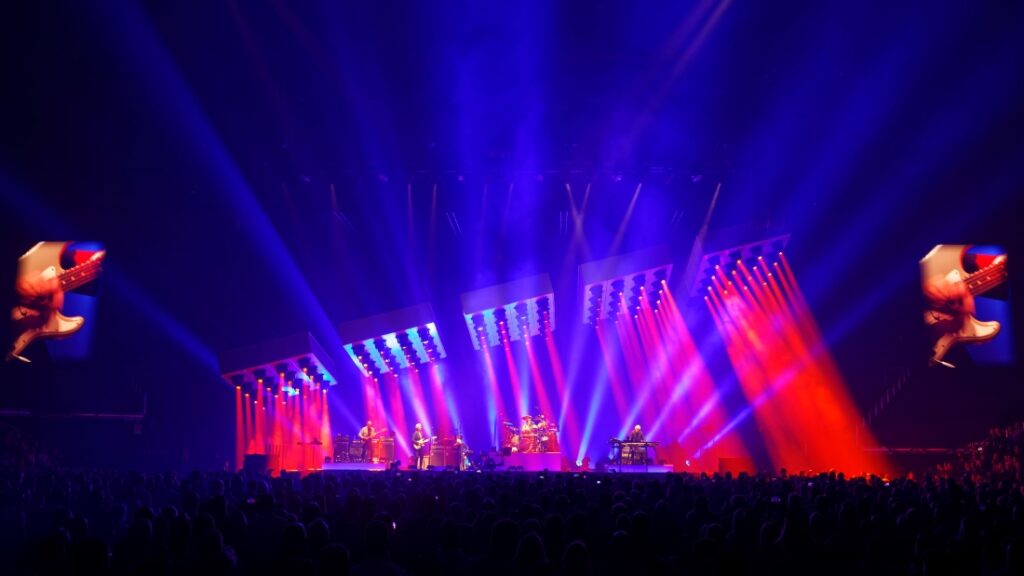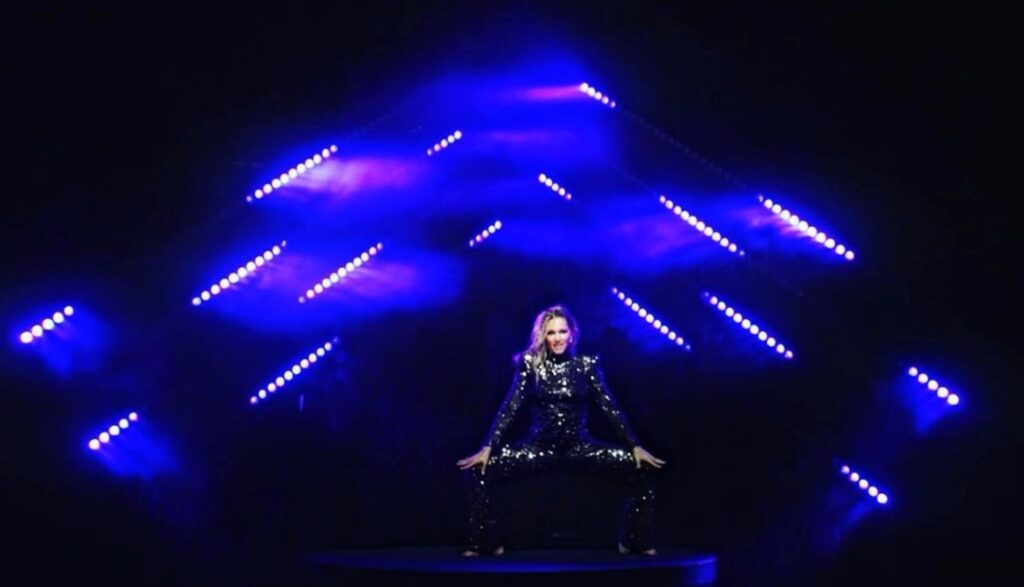Header: Bavaria Sounds 2022. Credit: Lighting and Video Design. Photo Credit: Wieder Design
In the world of lighting design, Roland Greil stands as a symbol of innovation and excellence. After leaving school, in Bavaria, Roland slowly learned the mechanics and politics of the music touring industry by lighting club bands in Germany and Austria.
From those humble beginnings in Bavaria, Roland can be found today working with some of the most successful in the world of music. Artists like; Adele, Phil Collins, and The Rolling Stones, for whom he has collaborated with Woodroffe Bassett Design (WBD) over the last 12 years. Most recently Roland has been responsible for the co-lighting design of the current Rammstein stadium tour and Genesis’s Last Domino tour with WBD. Besides his work in the concert and touring industry, Roland has designed and worked for television productions such as the “Eurovision Song Contest“, the biggest televised music show in the world. His resume also includes corporate and theatrical productions, as well as special events. His designing of shows extends into the areas of programming, planning and working as tour lighting director.
His work is distinguished by a professional, radically creative, and innovative mindset. Roland’s production design is characterized by an all-encompassing holistic approach, a culmination of his nearly two decades of expertise in media servers and the seamless integration of video and lighting design.
Roland has shared his knowledge through lectures in multiple countries, covering topics such as lighting, production design, programming, and lighting direction. Additionally, he is the author of the book “Show Lighting.” When not traveling, Roland resides in Munich with his wife Shannon and their daughter, enjoying a picturesque view of the mountains that hold a special place in his heart.
In this interview, Roland discusses his passion’s origins and how he ventured into entertainment lighting. His valuable lessons from the field, coupled with his creative philosophy, reveal a professional committed to humility and collaboration. Each project, a unique canvas, exemplifies his research-driven, visionary approach.

Can you tell us about how your passion for light design started?
It all started very early in my life, even though with a little detour. As a small kid at the age of 8, I got attracted by sound engineers at live concerts and made the decision to become one later in my life as well. Fast forward over the years of my childhood and being a teenager while playing with all show-related technology on an amateur level, I got more and more drawn to the visual side of things, which finally became the stepping stone on an immersive journey into the world of lighting and visual design.
Why and how did you start work in the Entertainment Lighting industry?
After the key moment at a young age, my dream has always been to work in the live entertainment industry. I have been blessed to get the opportunity to turn this dream into reality. It all started with self-built small lighting systems at my parent’s place and from there on evolved to work on local productions and for local vendors. From there on the productions got bigger, as well as the scope of my work more and more morphed into doing design work. The rest is as they say history.
What are some of the most valuable lessons you’ve learned from your vast and diverse experience? What do you find most challenging at times?
Quite honestly there are too many to list here. And every day teaches you new lessons. Possibly one of the biggest lessons has been to learn the human part of our business. The creative side obviously is the base for all our work, but how to sell it, how to communicate, as well as to stay a non-ego-driven person is the real key to success in the longevity of things. Furthermore, to understand and accept that 98% of our work is never about us, as it is always about the artist, show, play, or even architecture, that we light. They’re the stars and our work is “just” a supportive medium.
In terms of challenges, I love all of them, as they spice up our work and also motivate us to be a better person. I think some of the biggest challenges are still managing client’s expectations versus budget limitations and technical feasibility, as well as dealing with deadlines and tight schedules.

Credit: Co Lighting Design and Lighting Director for WBD.
Photo Credit: MHVogel
How do you approach a new project? Is there a philosophy you usually apply, or do you treat each new work as a blank canvas?
For sure there is a certain workflow or plan of attack, that is the baseline for every project. I think you need this to deliver the best possible result in the given time frames. That said, as every client and project is different, every project’s development is slightly different and must be treated individually as well. An important thing is, that my personal creative process always starts with research and a profound understanding of my client’s vision, needs and everything related. That leads to a purely creative step to define/ draw the image, that we want to achieve together before the first technical step comes into play, where you translate this vision into reality.
With such an incredible portfolio of shows and projects under your belt, some of them must have lingered on for longer. Is there a project you’re especially proud of that you can share with us?
I have been blessed to work on some outstanding projects with very special clients, artists and creatives. Honestly, I’m a bit proud of each and every one regardless of their size. Possibly one of the recent ones that stick out for me personally is Genesis’s last tour, which I have been able to design together with my long-time friend Patrick Woodroffe, as this band has been always at the forefront within our industry and pushing boundaries for decades.
To share your work, you wrote a book called “Show Lighting”. Can you walk us through some of the topics you’ve covered in the book?
The book is mostly about workflows and how to approach a project to deliver the best possible result within all the restraints. Obviously, we also tried to cover helpful tools and basics to do so.
What have been your biggest sources of inspiration?
Life in general with all its aspects, like emotions, nature, art and basically all it involves. To just walk around in nature or in a city could trigger and spark so much inspiration and imagination.
Are you working on something at the moment that you can tell us a bit about? What does the future hold for you?
Currently are busy times, as I’m currently working on a few new arena and stadium tours for great artists, as well as some very special one-off projects, like for instance a big and creatively ambitious ceremony in the Middle East.
What advice would you give to aspiring lighting designers who long to make an impact in the industry?
First of all, stay true to yourself at all times, seek inspiration everywhere you can and try to create your own bespoke design style/ language. And always stay a low-key, approachable human being. Never forget it is nearly never about yourself.

Credit: Lighting Design.










